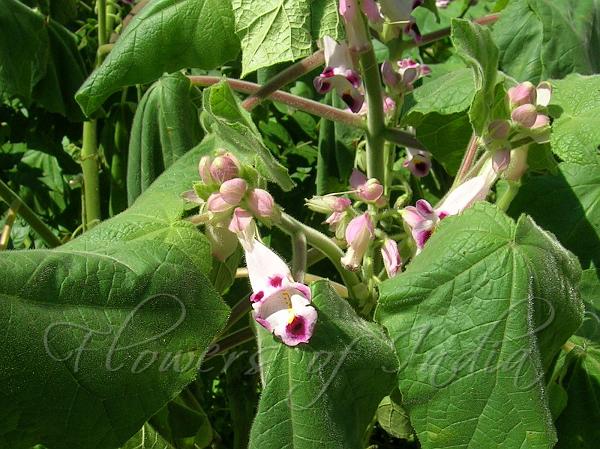|
| Devils Claws |
|

|

| File size | 333757 |
| Original date | 8/13/06 10:06 AM |
| Resolution | 2048 x 1536 |
| Flash | Flash did not fire, auto |
| Focal length | 5.4mm |
| Exposure time | 1/423s |
| Aperture | 4.8 |
| Focus Distance | |
| Metering Mode | Partial |
| Camera make | NIKON |
| Camera model | E3700 |
| Sensor type |
|
|
|
Photo: |
Botanical name: Martynia annua Family: Martyniaceae (devil's claw family)
These interesting plants are called devil's claws. They produce strange seed
pods that attach to the feet and legs of large animals, and include some of
the largest hitchhiker fruits in the world.
Bushy annual herb to 2 m high. Leaves kidney-shaped to circular, mostly 6–15
cm wide, both surfaces equally hairy, margins with shallow lobes; leaf stalk
9–14 cm long. Pod green and fleshy at first, drying to a black woody capsule.
Seeds brown to black, 2 to each pod. Distinguished by leaves and stems covered
with sticky glandular hairs; leaves pumpkin-like; flowers tubular, 4–6 cm
long, predominantly white to pink with 5 spreading lobes at the apex, each
lobe with a prominent purple spot, throat with red and yellow spots, fertile
stamens 2; pod to 4 cm long and to 1.5 cm wide, with recurved claws about 1 cm
long. Flowers in several flowered racemes. Flowers are bell shaped, purplish
white, with dark purple markings. The yellow lines in the corolla throat are
nectar guide lines to direct pollinator bees to the nectar source.
Devils Claws is native to Mexico to Central America, Caribbean, but now
widely naturalized in India including the Himalaya.
| Identification credit: Tabish | Photographed on Rishikesh-Joshimath highway, Uttarakhand. |
• Is this flower misidentified? If yes,